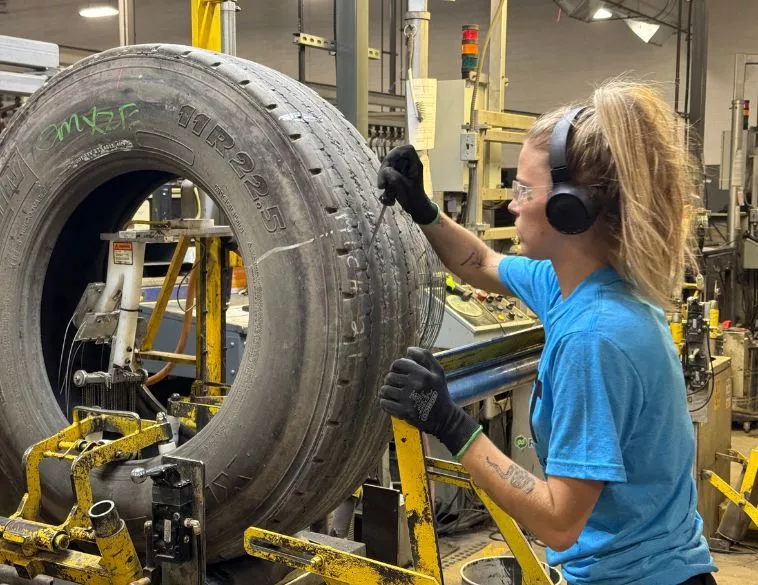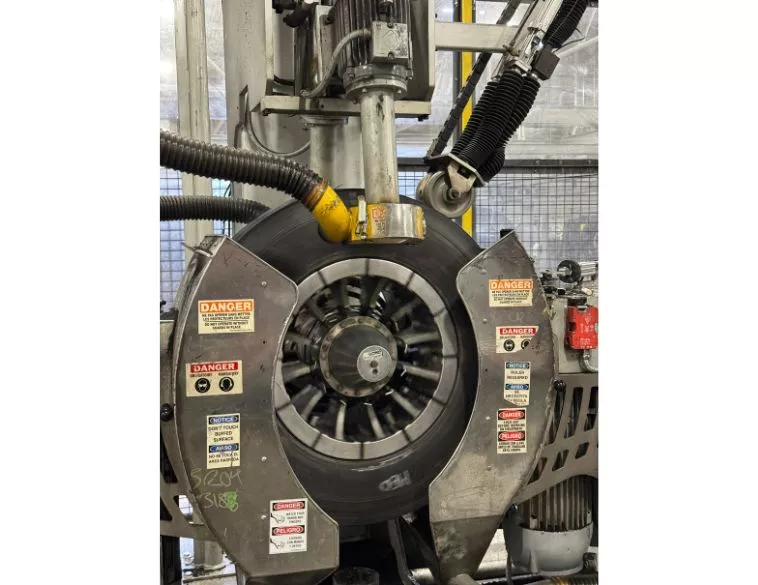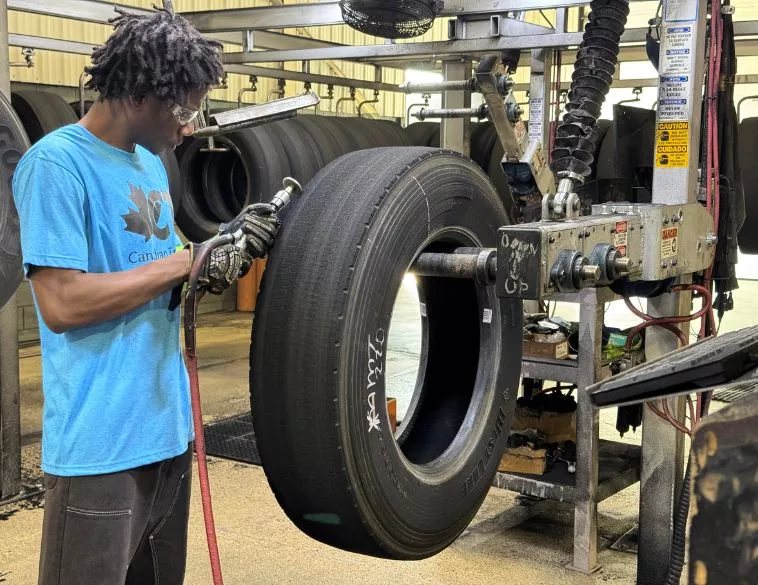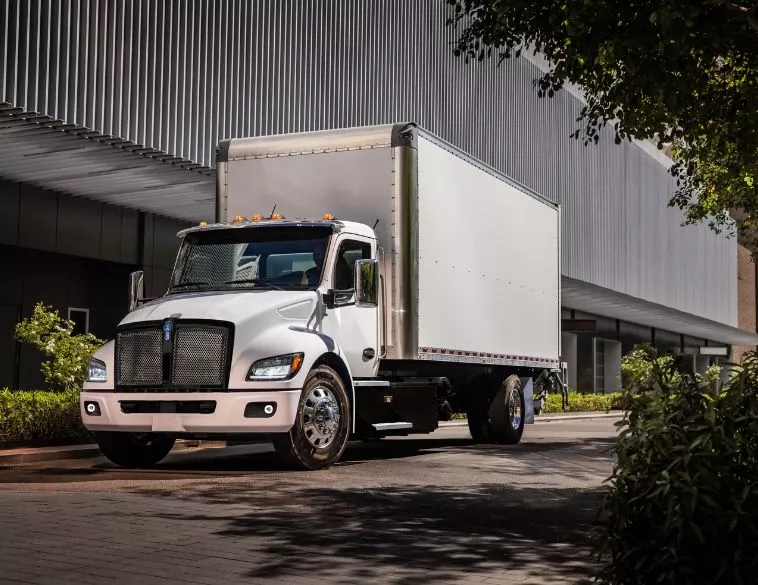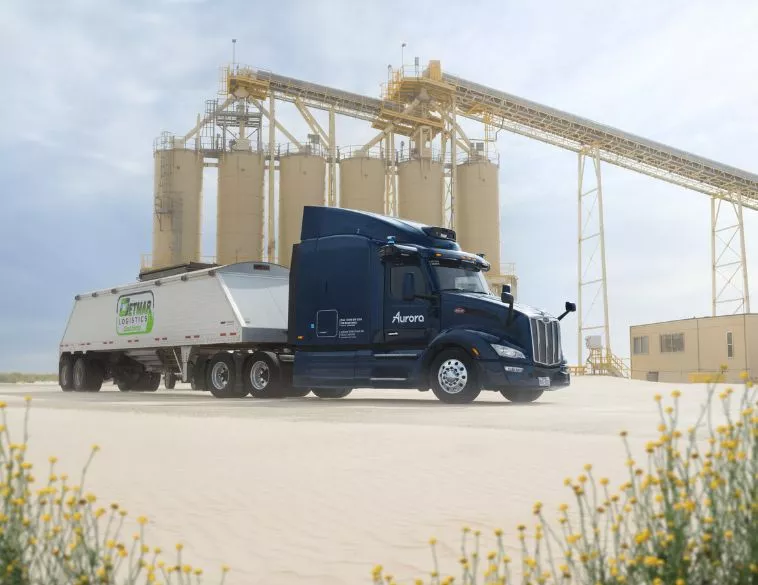The Three R’s

Embrace the three R’s of the tire industry: reuse, recycle and retread.
If you’ve ever purchased a refurbished iPhone or iPad from Apple or another retailer, you can see the benefits of retreading a tire. Not only does it save you money, but it’s also the environmentally-friendly choice to make.
According to Martin Collet, President of RTS Canada, the second-largest commercial tire retreader in Quebec by volume, a single 11R22.5 retread can have an impressive impact on the environment.
For starters, each retread saves 57 litres of oil, 71 lbs. of rubber, and 31 lbs. of steel, while reducing CO2 emissions by 243 lbs. Collet says that most of today’s commercial tires can be retreaded multiple times, including those made by lower-tier budget tire brands.
“All tires for Class 4 through Class 8 vehicles are made to be retreaded, regardless of where they’re made, including tires from Asia,” he says. “They’re all made to be reused.”
Collet explains that in order for commercial tires to be able to withstand the weight of today’s commercial vehicles, they must be constructed in a way that makes them sturdy enough to withstand retreading.
“Those tires are meant to be reused three times, which means four life cycles,” he adds, “and Michelin is currently pushing for their casings to be retreadable four time, which means those tires could have five life cycles.”
However, just because a tire was engineered to be reused, doesn’t mean that it automatically qualifies for retreading. “That’s determined by a visual inspection, as well as through shearography inspection,” Collet explains.
Tire shearography, he adds, is a non-destructive testing method used to detect internal defects in tires, such as separations or air pockets. It uses laser interferometry to measure surface deformation under vacuum stress. Only after a tire passes a thorough inspection, can it be used as a carcass for retreading.
Precure vs. mold cure
Retreading is performed in one of two ways: precure and mold cure. The former involves wrapping a tire carcass with a pre-fabricated tread, and then baking the assembly so that the tread and carcass become one. The latter is similar to the process used to make new tires: Rubber is applied to the carcass inside a mold that contains the tread design. The entire assembly is then baked with the mold in place, which bonds everything together.
If you’re considering retreading your fleet’s tires, you’ll have a few brands to choose from, including some of the better-known names like Bridgestone/Bandag, Goodyear, Michelin, Marangoni and Continental.
“Each brand has their own proprietary rubber compound and tread availabilities,” Collet says. “We are with Marangoni, and the big difference is that we use a splice-less technology with the precure process [known as RINGTREAD].”
According to Marangoni’s website, “RINGTREAD is the only tire retreading system that uses splice-less precured rings that adhere perfectly to the casing, without any tension or deformation to the tread profile. Compared to retreading with strips, the RINGTREAD system guarantees higher productivity, no waste and quality equivalent to a new tire.”
Plant tour
Fleet & Mobility magazine was recently invited to tour the Canadian Treads retreading plant in Ingersoll, Ontario, which uses Michelin technologies. The Ingersoll plant processes roughly 50,000 tires annually, but could easily scale up to over 70,000, according to Darcy Lee, Retread Sales Manager for Michelin Canada, who gave us the tour.
Lee explained the nine-step process every tire goes through at the plant:
STEP 1 - Initial Inspection
An operator scans the tire into the computer system. Every tire gets a barcode, which tracks each tire throughout the entire process. The operator inspects the tire from all angles with the help of powerful lights. In addition, an electric current is passed through the tire in order to detect any breaks, which might mean that there’s a nail hole that needs a closer look. The operator also feels each tire, looking for irregularities like bumps, and they remove any stones that might be lodged in the tread.
STEP 2 - Buffing
The old tread pattern is buffed off completely. The operator specifies the exact casing that needs to be buffed, the data is fed into the computer system, which tells the buffer how much rubber needs to be removed. This process is automatic and computer-controlled.
STEP 3 - CIA (Casing Integrity Analyzer)
Using a technology similar to an X-Ray or a CT-Scan at a hospital, the CIA system takes images of the inside of the casing in order to find damage that isn’t visible to the naked eye. This technology is proprietary to Michelin.
STEP 4 - Skive and Repair
Imperfections from nail holes and other damage are repaired. Low-RPM tools with a variety of heads are employed to make the repairs, and a filler gun is used to fill in the imperfections with hot rubber. The repaired surface is then smoothed out to remove any unwanted ridges.
STEP 5 - Tread Building
First, CTC (cushion-to-casing) rubber is applied to the carcass. A machine extrudes hot cushion-to-casing rubber, which will sit between the carcass and the new tread (once it’s applied) allowing for a strong bond between the two. The CTC rubber acts like a glue. The tread is then applied to the tire - either as a strip where the two ends are stapled together or as a custom mold.
STEP 6 - Enveloping
Michelin uses a proprietary process that includes an inner envelope and an outer envelope for equal pressure to the inside and outside of the tire. This step clamps the carcass and tread in place from all sides, preparing it for the curing process.
STEP 7 - Vulcanization
The tire is then placed into a pressurized steam oven, where it’s cured for about two hours at 126 degrees celsius.
STEP 8 - De-Enveloping
The inner and outer envelopes are removed.
STEP 9 - Final Inspection
All tires are inspected to make sure there are no abnormalities or defects. Once the tires pass final inspection, they’re ready to be shipped to a tire dealer or to a fleet customer.
Tangible benefits
Like a refurbished phone or tablet, a retreaded tire will save you money while also reducing your fleet’s impact on the environment. That’s because retreading a casing multiple times keeps tires out of landfills.
According to a report penned by John Woodrooffe a Research Scientist, Director
of the Commercial Vehicle Research and Policy Program, and Head of Vehicle Safety Analytics at the University of Michigan Transportation Research Institute, retreaded tires, “generating more than USD $3 billion in fleet cost savings and the avoidance of 1.4 billion lbs. of landfill waste annually.” That’s quite an accomplishment.


